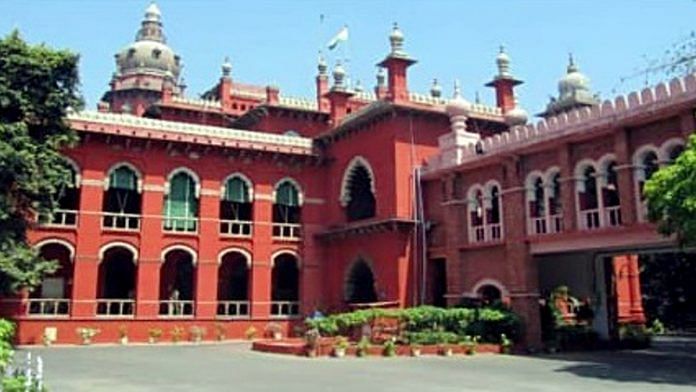New Delhi: The Madras High Court striking down a provision of Prohibition of Benami Property Transactions Act, 1988, on qualification of judicial members has extended the tussle between the judiciary and the government over tribunals.
A bench comprising Chief Justice Munishwar Nath Bhandari and Justice D. Bharatha Chakravarthy, on 1 April, directed the central government to frame the provision again, keeping a 2010 Supreme Court judgment on the subject in mind.
The court was hearing a petition challenging Section 32(2)(a) of the 1988 Act. Section 32 lists the qualifications for appointment of a chairperson and members of the appellate tribunal under the Act. Subsection 2(a) of Section 32 says anybody who has been a member of the Indian Legal Service and has held the post of additional secretary or an equivalent post in that service can be appointed as judicial member.
The provision was added to the 1988 law through an amendment in 2016, despite the 2010 judgment and other verdicts to the contrary.
In the 2010 judgment, the Supreme Court had upheld the creation of the National Company Law Tribunal (NCLT), while directing changes in its structure. This verdict had emphasised on the independence of the judiciary and had commented on the “gradual dilution of the standards and qualification” for tribunal members who decide cases that were earlier being decided by high courts.
The apex court had then ruled that only judges and advocates can be considered for appointment as judicial members of tribunals. This, the court noted, was necessary to maintain judicial independence.
The Madras High Court has now spoken of the concept of “separation of powers”, and explained that the 2010 judgment “has application to all the Tribunals… the principal issue decided qua the basic structure of (the) Constitution ensures the separation of powers and independence of the Judiciary from the clutches of the Executive”.
Also read: President Kovind to inaugurate National Judicial Conference in Gujarat on 9 April
Legal tussle over tribunals
The legal tussle over the powers of tribunals is an old one, but over the past four years, the litigation over appointments to these bodies has thrust them into a vacancy crisis.
In March 2017, the Finance Act allowed the central government to make rules on conditions of service for tribunal chairpersons and members. This included the power to make rules on their appointments, qualifications, tenure, salaries and allowances and removals.
Accordingly, the Ministry of Finance notified the rules in June 2017. However, the rules were viewed as an attempt by the government to gain supremacy in tribunal appointments, as they curtailed the tenure of the members, placed age restrictions on lawyers applying for member posts, did away with House Rent Allowance (HRA) for members, allowed the executive to remove a judicial member and included more government nominees in the search-cum-selection committee.
The rules were challenged and subsequently struck down by the Supreme Court in November 2019 by a five-judge Constitution Bench. The court directed the government to reformulate the rules, laying down principles on ensuring the independence of the tribunals.
In February 2020, new rules were notified. These were challenged in the Supreme Court again and the court asked the government to modify them in November 2020. The court then laid down specific guidelines on appointments. These included a five-year term for tribunal members, 10-year experience eligibility for appointment of lawyers as judicial members, and recommendation of one person instead of two or three by the committee.
The government then promulgated the Tribunals Reforms (Rationalisation and Conditions of Service) Ordinance, 2021, in April last year. But this had provisions similar to the rules that were struck down by the Supreme Court in November 2020.
In July 2021, the court declared a few provisions of this ordinance unconstitutional again, pointing out that reintroducing these provisions despite similar provisions being struck down earlier was “clearly an attempt to override the declaration of law by this Court”.
However, a month after this, in August last year, Parliament passed the Tribunals Reforms Bill 2021, with provisions relating to tenure, age criteria and search-cum-selection committee for tribunal appointments.
Among other things, the Bill provides for a four-year term for tribunal members. It sets the upper age for the chairperson at 70 years and for other members at 67 years. The minimum age limit for appointment is 50 years.
The provisions of the Bill are again similar to certain provisions of the 2021 ordinance, which were struck down by the Supreme Court in July 2021. The Supreme Court is now set to decide whether provisions of this new 2021 Bill should also be struck down.
(Edited by Nida Fatima Siddiqui)
Also read: Reforms in tribunals necessary but Modi govt isn’t helping judiciary by scrapping them



